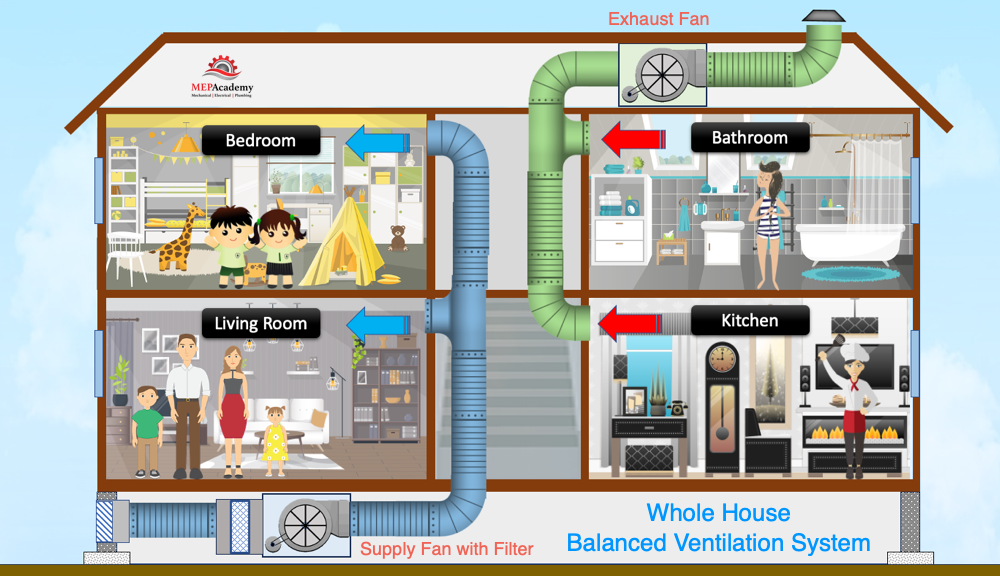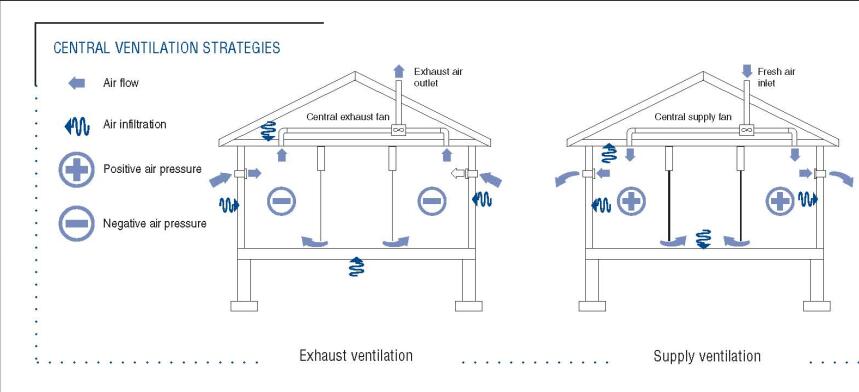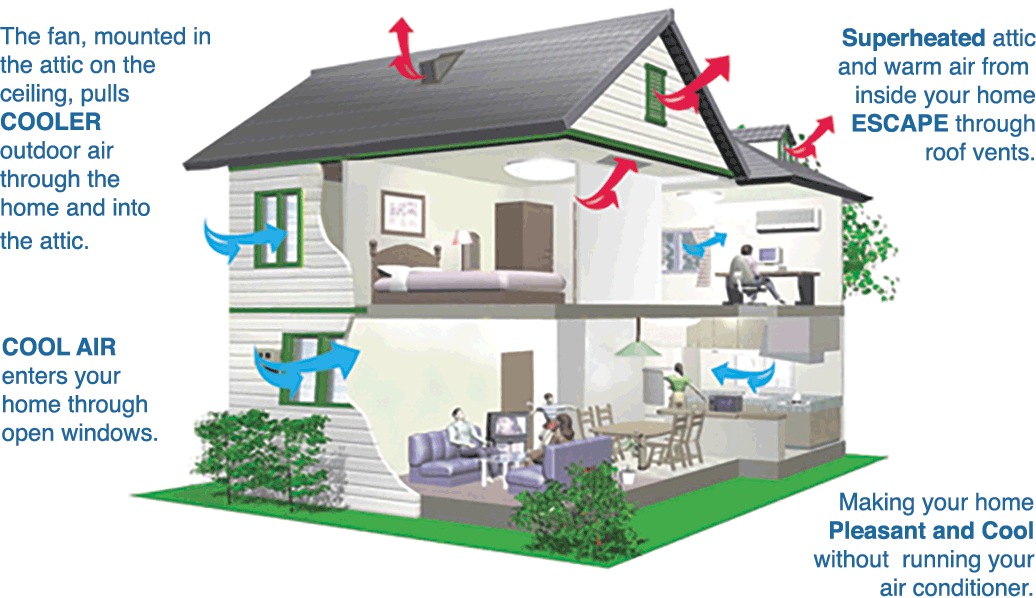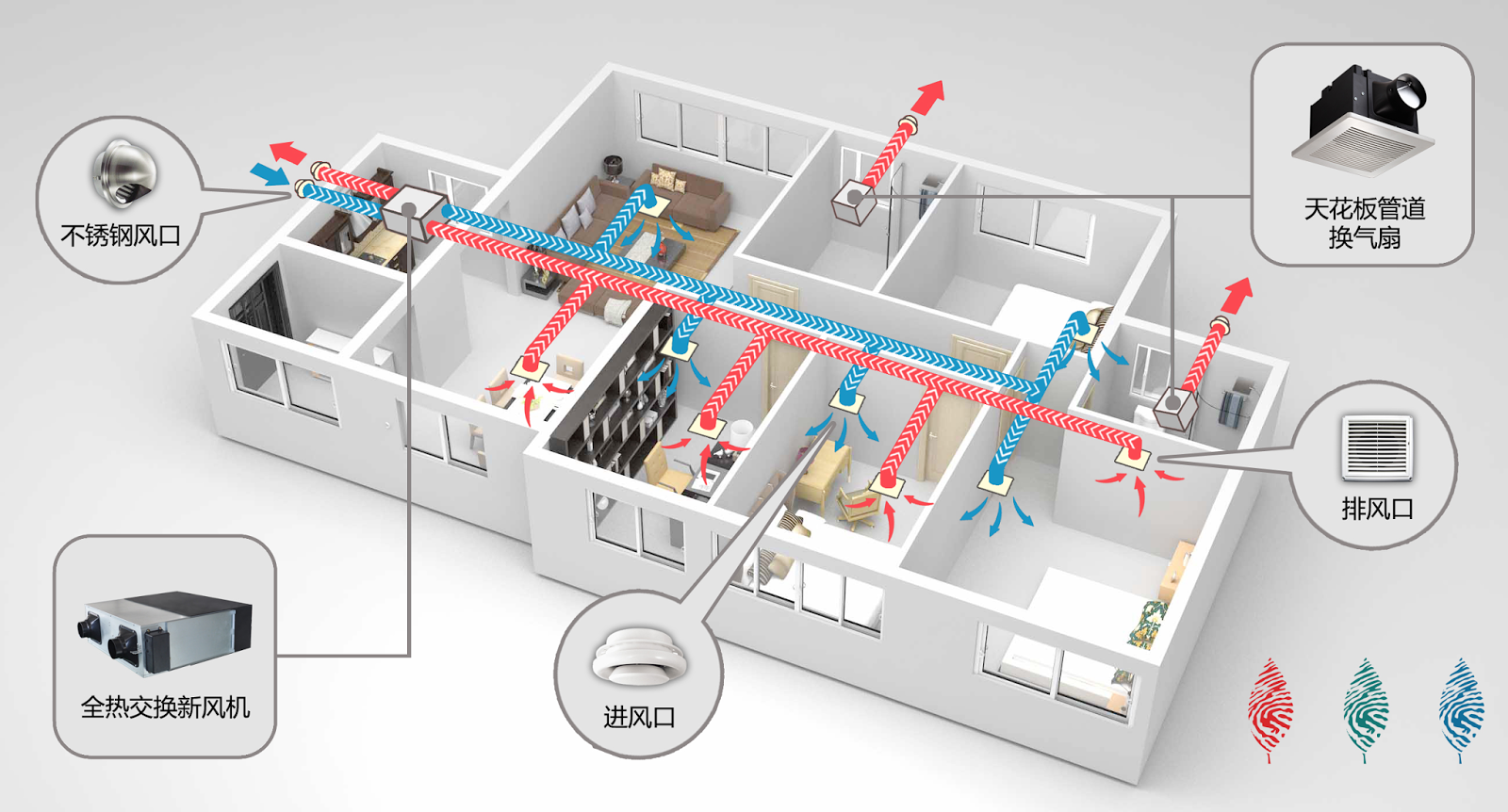What Is A Whole House Ventilation System

Maintaining good indoor air quality is crucial for a healthy and comfortable living environment. While we often focus on heating and cooling, ventilation plays an equally important role. A whole house ventilation system offers a comprehensive solution for circulating fresh air throughout your home, diluting indoor pollutants, and controlling moisture levels. Let's explore what these systems are, how they work, and why they might be a valuable addition to your home.
What is a Whole House Ventilation System?
A whole house ventilation system is a mechanical system designed to intentionally and continuously exchange stale indoor air with fresh outdoor air. Unlike simply opening windows, these systems offer controlled and filtered ventilation, regardless of weather conditions. They are designed to address the shortcomings of natural ventilation, particularly in modern, tightly sealed homes.
Think of your home like a container. Over time, it accumulates contaminants like dust, pollen, pet dander, volatile organic compounds (VOCs) from cleaning products and furniture, and moisture. A whole house ventilation system acts like a "lung" for your home, expelling stale, contaminated air and bringing in fresh, clean air.
Why Are Whole House Ventilation Systems Important?
Modern homes are often built with tight seals to improve energy efficiency. While this helps reduce heating and cooling costs, it can also trap pollutants indoors. This is where whole house ventilation systems come in. They provide a crucial service, and the importance of these systems can be explained by the following reasons:
- Improved Indoor Air Quality: They help remove pollutants, allergens, and odors, creating a healthier living environment.
- Moisture Control: They reduce humidity levels, preventing mold growth and structural damage.
- Reduced Energy Costs: Some systems can recover heat or cool energy from outgoing air, reducing the energy needed to condition incoming air.
- Enhanced Comfort: They ensure a consistent supply of fresh air, reducing stuffiness and improving overall comfort.
Types of Whole House Ventilation Systems
Several types of whole house ventilation systems are available, each with its own advantages and disadvantages. The best choice for your home will depend on your climate, budget, and specific needs. Here's a breakdown of the most common types:
Exhaust Ventilation
Exhaust ventilation systems work by exhausting stale indoor air to the outside. This creates negative pressure inside the house, which draws fresh air in through cracks, windows, and other openings. Common examples include bathroom and kitchen exhaust fans. While simple and relatively inexpensive, exhaust ventilation can be less effective at distributing fresh air evenly throughout the house and may draw in unfiltered air through unintended pathways.
Supply Ventilation
Supply ventilation systems use a fan to blow fresh outdoor air into the house. This creates positive pressure, which forces stale indoor air out through cracks and other openings. While this method provides better control over the incoming air, it can also lead to moisture problems if not properly balanced, as it can force humid indoor air into wall cavities.
Balanced Ventilation
Balanced ventilation systems provide both supply and exhaust ventilation, ensuring that the amount of air entering the house equals the amount of air leaving. This type of system maintains neutral pressure, preventing moisture problems and ensuring efficient ventilation. Heat Recovery Ventilators (HRVs) and Energy Recovery Ventilators (ERVs) fall under this category and offer the added benefit of energy recovery.
Heat Recovery Ventilators (HRVs)
Heat Recovery Ventilators (HRVs) are balanced ventilation systems designed for colder climates. They transfer heat from the outgoing stale air to the incoming fresh air, preheating it in the winter and pre-cooling it in the summer. This significantly reduces energy costs associated with heating and cooling the incoming air. Think of it like recycling the heat – instead of simply throwing it away, the HRV reuses it to warm the fresh air coming in.
Energy Recovery Ventilators (ERVs)
Energy Recovery Ventilators (ERVs) are also balanced ventilation systems, but they are designed for climates with both hot, humid summers and cold winters. In addition to transferring heat, ERVs also transfer moisture between the outgoing and incoming air. This helps to control humidity levels inside the house, preventing dryness in the winter and excessive humidity in the summer. Imagine the ERV as regulating both the temperature and the "wetness" of the air circulating within your home.
Key Considerations When Choosing a Whole House Ventilation System
Selecting the right whole house ventilation system requires careful consideration of several factors. Here are some key aspects to keep in mind:
- Climate: The climate you live in will significantly impact the type of system best suited for your needs. HRVs are generally recommended for colder climates, while ERVs are more suitable for climates with both hot, humid summers and cold winters.
- Home Size and Layout: The size and layout of your home will determine the required airflow rate and the number of ventilation points needed.
- Air Quality Concerns: If you have specific air quality concerns, such as allergies or asthma, you may want to consider a system with advanced filtration capabilities.
- Energy Efficiency: Look for systems with high energy recovery rates to minimize energy costs.
- Installation Costs: Installation costs can vary depending on the type of system and the complexity of the installation.
- Maintenance Requirements: All ventilation systems require regular maintenance, such as filter replacement. Consider the ease of maintenance when making your decision.
- Noise Levels: Some systems can be noisy, so consider the noise levels when selecting a system, especially if it will be located near bedrooms or living areas.
Installation and Maintenance
Proper installation is crucial for the effective operation of a whole house ventilation system. It's generally recommended to have the system installed by a qualified HVAC professional. They can ensure that the system is properly sized, installed, and balanced to meet your home's specific needs.
Maintenance is equally important. Regularly replacing the filters is essential to maintain good air quality and prevent the system from becoming clogged. You should also periodically inspect the system for any signs of damage or malfunction and have it professionally serviced as needed.
Cost Considerations
The cost of a whole house ventilation system can vary depending on the type of system, the size of your home, and the complexity of the installation. Exhaust and supply ventilation systems are generally the least expensive, while HRVs and ERVs are more costly due to their advanced features and energy recovery capabilities.
While the initial investment may seem significant, it's important to consider the long-term benefits, such as improved air quality, reduced energy costs, and increased home value. Many utility companies also offer rebates and incentives for installing energy-efficient ventilation systems, which can help offset the initial cost.
Is a Whole House Ventilation System Right for You?
Deciding whether to invest in a whole house ventilation system is a personal decision that depends on your individual needs and circumstances. Consider the following questions to help you determine if a system is right for you:
- Is your home tightly sealed to improve energy efficiency?
- Do you experience poor indoor air quality, such as stuffiness, odors, or excessive humidity?
- Do you have allergies, asthma, or other respiratory problems?
- Are you concerned about mold growth or structural damage due to moisture?
- Are you looking for a way to improve energy efficiency and reduce heating and cooling costs?
If you answered yes to any of these questions, a whole house ventilation system may be a worthwhile investment. Consulting with a qualified HVAC professional can help you determine the best type of system for your home and provide you with a detailed cost estimate.
In Summary
A whole house ventilation system is an investment in your health, comfort, and the longevity of your home. By providing a continuous supply of fresh, filtered air and controlling moisture levels, these systems create a healthier and more comfortable living environment. While the initial cost may be a factor, the long-term benefits of improved air quality, reduced energy costs, and enhanced home value make them a worthwhile consideration for many homeowners. By understanding the different types of systems available and carefully considering your individual needs, you can make an informed decision that will benefit you and your family for years to come.










